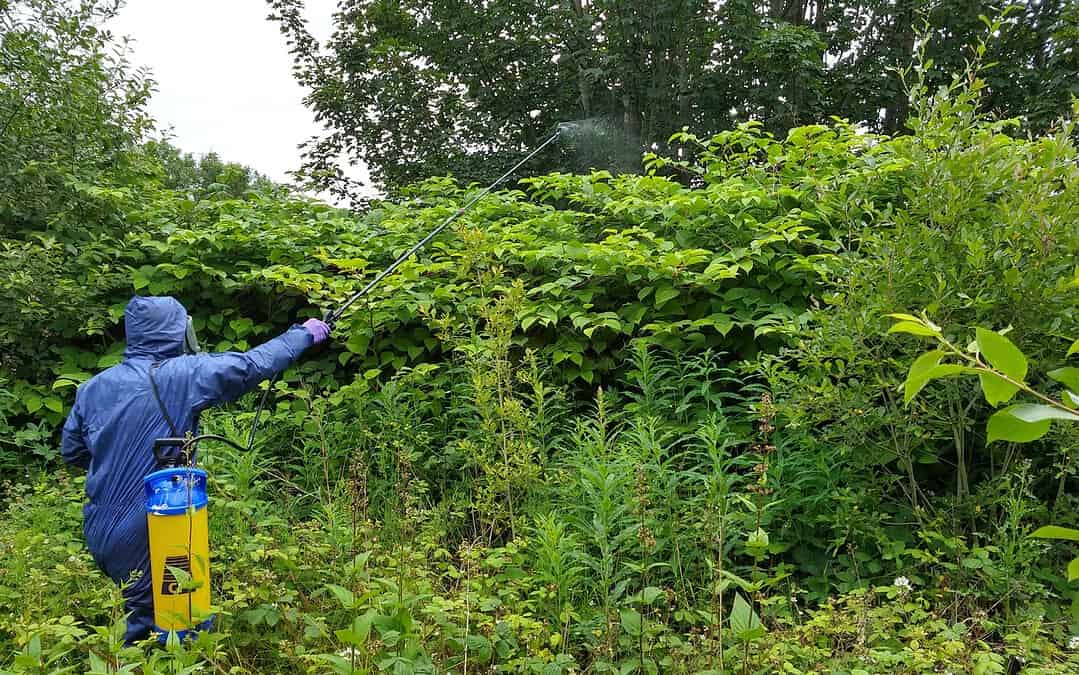The Ultimate Guide to Japanese Knotweed
Japanese Knotweed – The Ultimate Guide to Japanese Knotweed. Impacts, control methods, implications, and Uses. Learn how to manage and prevent its spread effectively. Japanese knotweed (Fallopia japonica) is an invasive, fast-growing perennial plant. That can have significant impacts on the environment and human-made structures. It was introduced to Europe as an ornamental plant in the 19th century. It has since spread rapidly through human activity in many countries worldwide. This guide provides comprehensive information on Japanese knotweed. Including its definition, impacts, control methods, implications, and uses.
Definition and Description of Japanese Knotweed
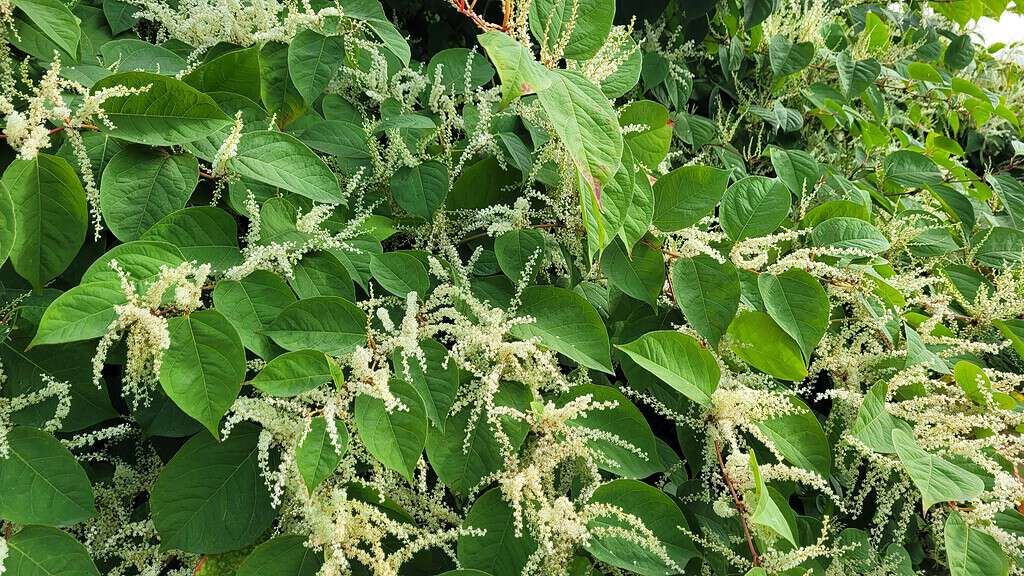
Japanese knotweed flowering
Japanese knotweed is a highly invasive plant that can quickly colonise disturbed habitats and outcompete native species. It is easily recognisable by its hollow stem with purple-red speckles, broad heart-shaped leaves, and small creamy-white flowers. The plant typically grows near waterways, railways, roads, disused land, and other moist habitats. It can grow up to three meters tall.
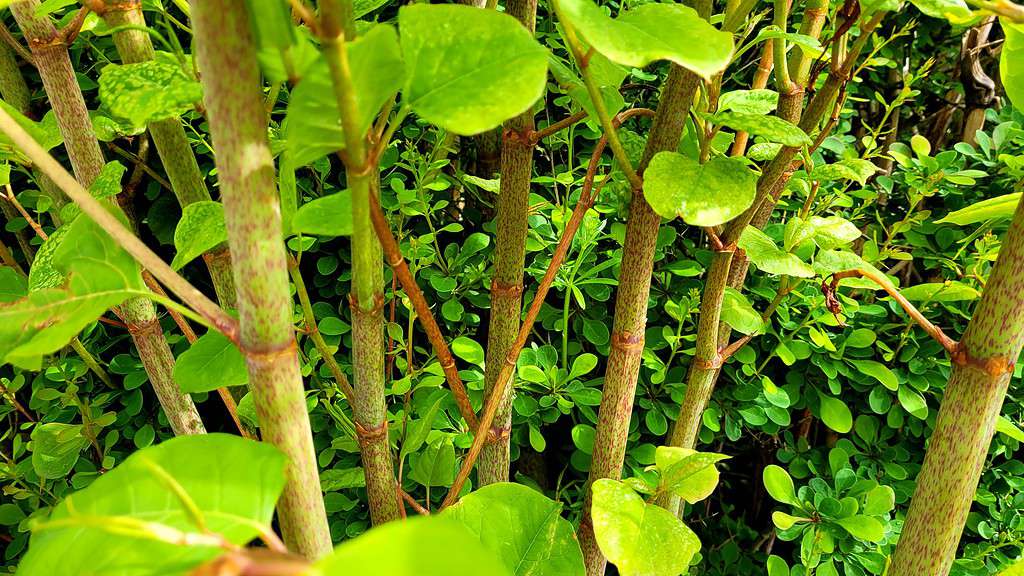
Japanese knotweed stems are speckled.
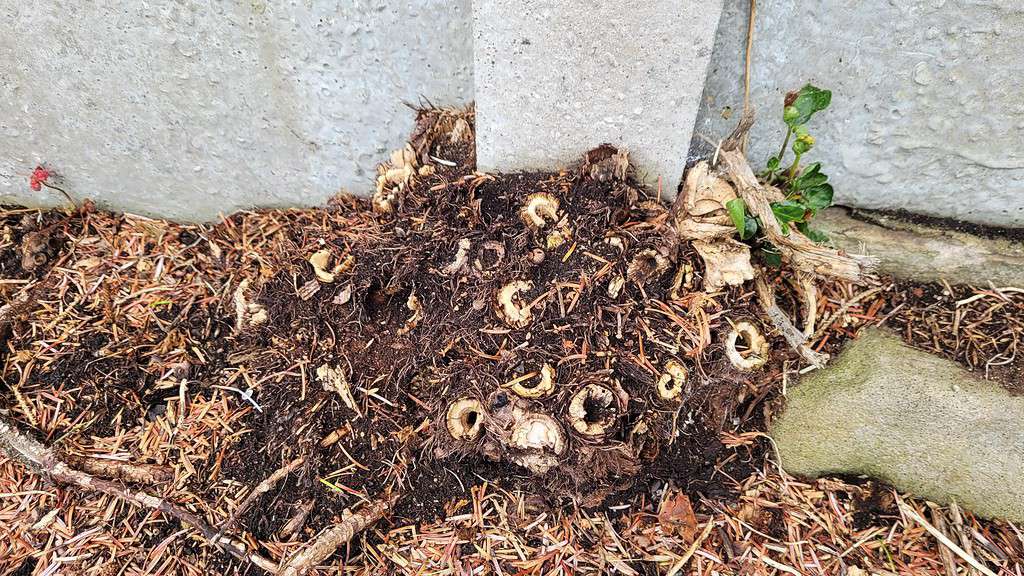
Japanese Knotweed crown
Impacts of Japanese Knotweed on the Environment
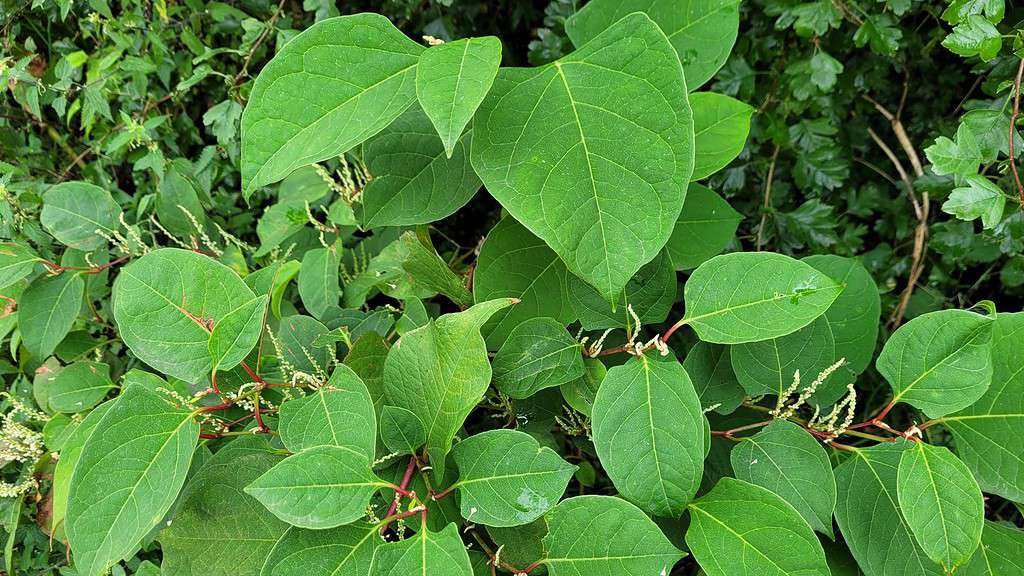
Japanese knotweed leaves
Japanese knotweed has a range of environmental impacts, including effects on biodiversity and erosion. Its fast growth and dense canopies can displace native plant species and reduce biodiversity, while its deep roots can exacerbate erosion in already destabilised areas.
Legal Status and Control Methods of Japanese Knotweed
Japanese knotweed is classified as an invasive species in many countries. Moreover, it is regulated under various laws and policies to control its spread. Control methods include herbicides, physical removal, and biocontrol agents. Herbicides, especially glyphosate-based products, are commonly used. Moreover, these must be applied at the right time and in the right way to be effective. Additionally, physical removal can be challenging due to the plant’s vigorous growth and deep roots and must be done with care to avoid spreading the plant rhizomes. Biocontrol agents, such as insect and fungal species, have been introduced to control Japanese knotweed, but their effectiveness is still being evaluated. However, most parts of the UK are too cold for the bugs to be able to colonise.
Implications for Land Development, Property Value, and Infrastructure
Japanese knotweed can complicate land development projects and lower property values. It can also damage infrastructure such as foundations, walls, and pipes. Development projects may require significant investment in knotweed control. Moreover, banks and lenders may be wary of lending on properties affected by Japanese knotweed. This is why it’s best to understand The Ultimate Guide to Japanese Knotweed.
Prevention and Management Strategies for Homeowners and Land Managers
Homeowners and land managers can help prevent and manage Japanese knotweed infestations. Through regular monitoring and reporting. Physical removal and herbicide treatment, and proper disposal of cuttings and roots. Additional Land managers can also implement integrated management strategies. Therefore, monitor and evaluate control efforts and work with stakeholders to raise awareness and implement best practices.
Safety and Health Considerations When Handling Japanese Knotweed
Contact with Japanese knotweed can cause skin irritation, so wearing protective clothing and gloves is recommended when handling the plant. Inhaling Japanese knotweed while burning can also cause respiratory irritation, so a mask should be worn, and the plant should avoid being burned or crushed.
Uses of Japanese Knotweed
Despite its invasive nature, Japanese knotweed has some beneficial uses, including medicinal and culinary purposes. The plant contains compounds with anti-inflammatory and anti-cancer properties and has been used in traditional medicine in some cultures. Young shoots of the plant can also be cooked and eaten and have a flavour similar to asparagus.
Japanese knotweed is a highly invasive plant.
With significant impacts on the environment and human-made structures. However, proper monitoring, control efforts, and stakeholder outreach and education can prevent and manage the spread of Japanese knotweed. Additionally, the plant has some beneficial uses, including medicinal and culinary purposes, which can be explored further to maximise its positive impact. It is essential to stay informed about Japanese knotweed. Moreover, understand its effects and follow best practices for preventing and managing its spread. Regular monitoring and reporting of Japanese knotweed infestations and proper disposal of cuttings and roots can help prevent its spread and maintain the health of our ecosystems and built environments.
The spread of Japanese knotweed
It is mainly caused by human activities such as soil disturbance and transportation of plant material. It can be spread through the movement of contaminated soil, equipment, or plant fragments and by intentionally or accidentally dumping garden waste. The plant’s ability to regenerate from tiny pieces of its root system also contributes to its spread. Additionally, Japanese knotweed can produce numerous seeds, although seed production is rare outside of its native range in Japan. Once established, the plant can quickly take over an area, out-competing native vegetation and causing significant ecological and economic damage. Therefore, it is crucial to prevent the spread of Japanese knotweed by properly disposing of any plant material and avoiding disturbing infested areas.
If you are a homeowner or land manager dealing with Japanese knotweed
It is always best to seek professional assistance to implement a management plan that meets your needs. At Japanese Knotweed Plus, we specialise in Japanese knotweed control and can provide guidance and support to help you effectively manage the plant on your property. In the end, the effective management of Japanese knotweed requires a collaborative effort between the public, private, and scientific sectors. By working together, we can minimise the impacts of this invasive species and maintain the health and diversity of our ecosystems and built environments.
